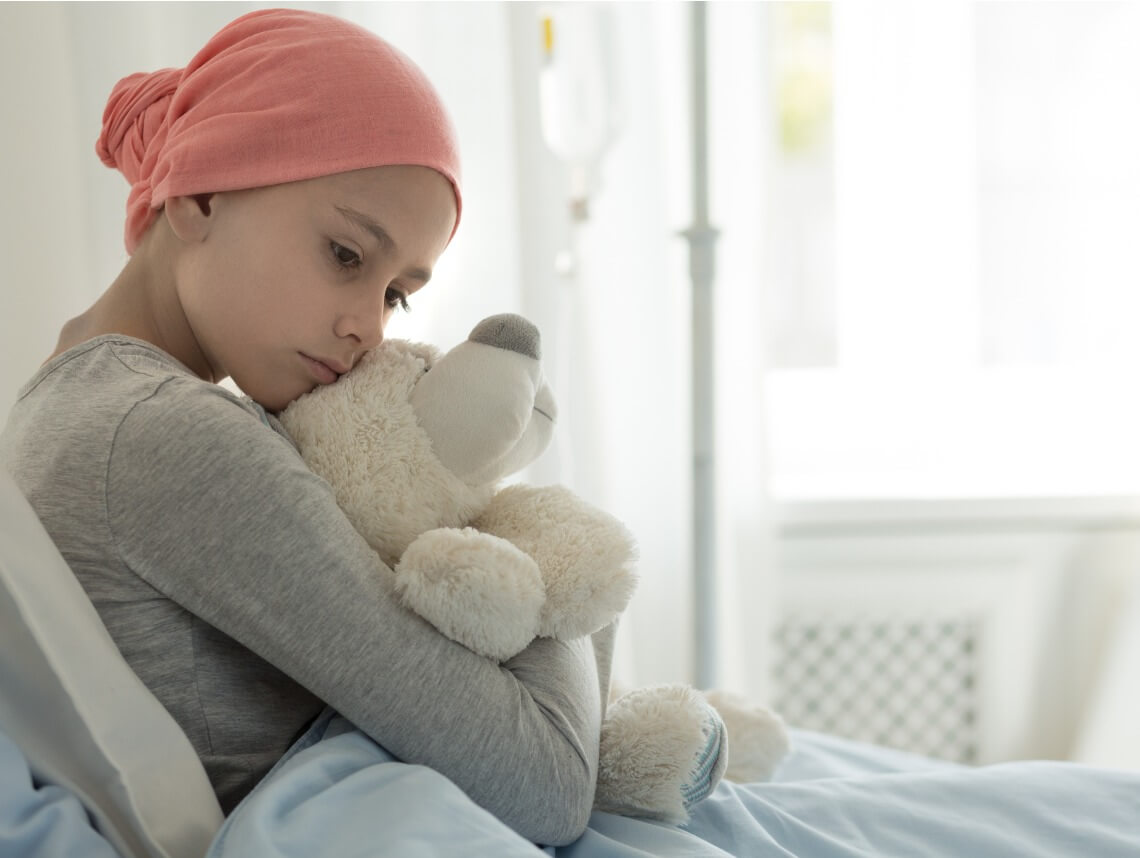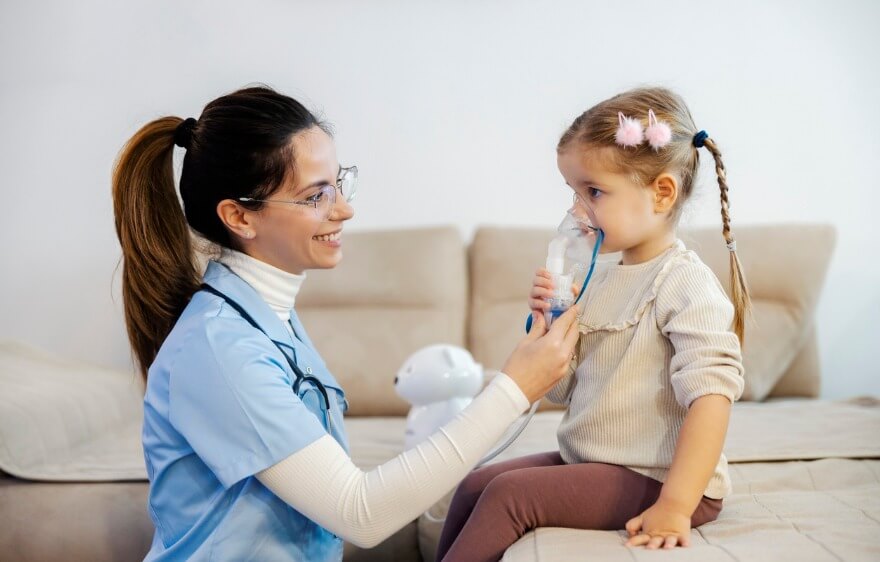Learning that your child has leukemia and helping them through the first stages of treatment can be a difficult and overwhelming time for any family. Today, there are more treatment and care options than ever before, but it is still a serious and life-changing diagnosis.
This overview will help you gain a clear understanding of acute lymphoblastic leukemia in children, including the causes, potential complications, treatments, and how to meet care needs for your little one.
What Is Acute Lymphoblastic Leukemia?
Acute lymphoblastic leukemia (ALL) is the most common form of leukemia in children. Leukemia is a form of cancer that affects the white blood cells and bone marrow in the body. With ALL, the body makes too much of a white blood cell called a lymphocyte, or lymphoblast, which can crowd out other healthy cells and limit the body’s ability to fight off disease and infection.
Acute Lymphoblastic Leukemia Causes and Risk Factors
There are a number of potential causes for ALL, although researchers are still learning more about why this disease develops. Generally, acute lymphoblastic leukemia happens because of a mutation in the DNA that causes the bone marrow to continue producing the immature cells that grow into lymphoblasts without stopping.
Risk factors for this mutation and related cases of ALL can include:
- Having a family history of leukemia, particularly a sibling with the condition
- Previous treatment for another form of cancer, including chemotherapy and radiation therapy
- Exposure to high levels of radiation
- Certain genetic disorders such as Down Syndrome
In many cases, doctors are unable to find a specific cause for ALL.
Acute Lymphoblastic Leukemia Symptoms
One of the most common symptoms of ALL and other types of leukemia is anemia. This is when the body has too few red blood cells, which can happen because the bone marrow makes too many lymphoblasts. Because the red blood cells are responsible for delivering oxygen to the body, children with anemia can have a pale appearance, deal with fatigue, and have shortness of breath.
Other symptoms of ALL can include:
- Frequent bleeding due to lack of platelets
- Aches and pains, especially in the bones
- Fevers
- Swollen lymph nodes, which can cause lumps in the armpits, neck, and abdominal areas
Acute Lymphoblastic Leukemia Complications
The most common long-term complication from ALL is an increased risk of infection caused by the body’s inability to fight off bacteria and viruses. Many children can also deal with gastrointestinal issues, as well as neurological problems.
Diagnosing Acute Lymphoblastic Leukemia
Like other forms of cancer, the earlier that ALL can be diagnosed and treatment can begin, the better. To identify leukemia as the underlying cause of symptoms, diagnostic steps can include:
- Blood tests— including complete blood count and liver and kidney function panels to identify the number, type, and shape of the white blood cells.
- Imaging tests— such as magnetic resonance imagery (MRI), computerized tomography (CT) scans, and X-rays to look for masses and rule out other causes.
- Bone marrow aspiration and biopsy — a small sample of bone marrow, usually drawn from the hip, can help determine the type of leukemia, identify specific genetic problems, and analyze the type of stem cell transplant a child may need.
- Spinal fluid test— also called a spinal tap, this helps determine if cancer cells are present in the spinal fluid.
Treatments for Acute Lymphoblastic Leukemia
Treatment for ALL will usually depend on how advanced the condition is and what types of lymphoblasts are present. The most common treatments include:
- Chemotherapy — this is therapy using special drugs designed to kill cancer cells and force them into remission.
- Stem cell transplants— also called a bone marrow transplant, this involves transplanting healthy and matching stem cells from a donor to encourage the production and growth of healthy white blood cells.
- Radiation therapy— using X-rays to kill cancer cells
- Targeted therapy— using special drugs that can kill cancer cells without harming normal cells
- Immunotherapy— using medications that help the immune system fight cancer cells
Caring for a Child with Acute Lymphoblastic Leukemia
The long-term prognosis for children with ALL has continued to improve throughout the years, and today more than 90% of children with this diagnosis survive. Children with this condition will have ongoing care needs, including diagnostic visits, therapy appointments, and other forms of treatment. Many children and families also benefit from counseling and support groups to help manage emotional and behavioral needs.
It is also extremely important to let your kid be a kid and be able to relax and have fun as much as possible during this difficult time. Providing a stress-free and healthy environment also means taking care of yourself, eating right, and getting enough sleep.
To help balance care needs with the lives of you and your family, pediatric home health services are an option that many families turn to for support with a serious diagnosis such as ALL. It can be overwhelming caring for a child with complex needs, especially if there are multiple children in the home. A dedicated home health care professional can assist with a wide range of services, from assisting with medication and nutrition to accompanying children to appointments.
Contact Care Options for Kids for Home Health Care
It can be hard to balance your time between work, home, and caring for a child. That’s why our team of professionals at Care Options for Kids is here to help. We have been enforcing precautionary measures and following the Centers For Disease Control (CDC) guidelines for COVID-19 to ensure the safety and health of our clients and employees.
Our home health care services offer one-on-one care in the comfort of your home. We refer loving and competent nurses to provide customized care for families — from a few hours a day to around-the-clock supervision. Contact us directly to speak with a home health care professional or request a free in-home assessment. Together we can determine the best plan of action to keep your loved ones happy and healthy.
If you or a loved one are considering Pediatric Home Health Care Services, contact the caring staff at Care Options for Kids. Call today at (888) 592-5855.






